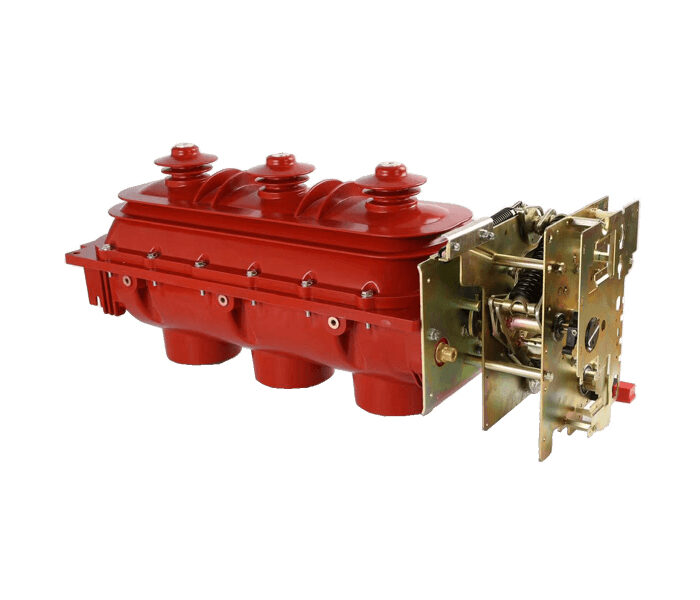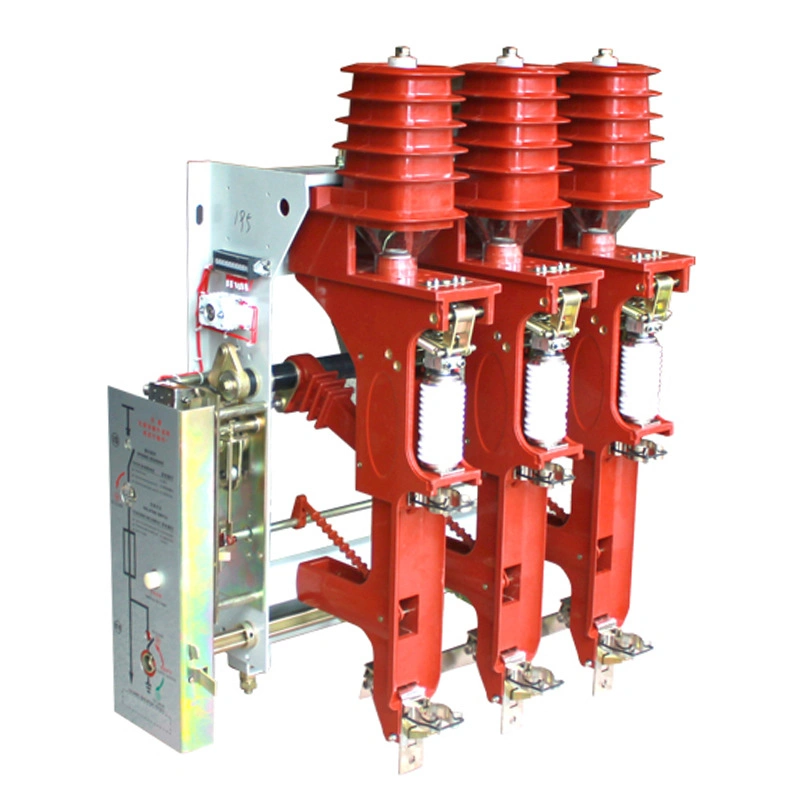
Detailed Explanation of Four Key Medium Voltage Switch Types: Isolator, Load Break Switch, Circuit Breaker, and Earthing Switch
Keywords: MV distribution, isolator, load break switch, circuit breaker, earthing switch, RMU, KYN28, ring main unit, power supply safety, smart grid
1. Introduction
With the continued development of urban power grids and industrial supply systems, medium-voltage (MV) distribution systems play an increasingly important role in modern power structures. In MV networks ranging from 6kV to 40.5kV, achieving safe, reliable, and maintainable operations requires the appropriate configuration of switching equipment. Among these, isolators, load break switches, circuit breakers, and earthing switches serve critical but distinct roles, and their coordinated application ensures stable operation and effective fault protection.
This article systematically analyzes the definitions, functions, structures, typical applications, and selection guidelines of these four key MV switches. It aims to help engineers, operators, and manufacturers better understand their value in power systems.


2. Basic Definitions and Operating Principles of Four Types of Switches
2.1 Isolator (Disconnect Switch)
An isolator is used to physically disconnect a circuit when there is no load current, ensuring safety during equipment maintenance. Its key feature is a “visible break point,” which provides visual confirmation that the circuit is open and de-energized.
Isolators do not have arc-extinguishing capabilities and cannot be operated under load or fault conditions. They must only be operated after the circuit breaker has opened the circuit. Their primary role is to provide safe disconnection for maintenance.
2.2 Load Break Switch (LBS)
A load break switch is capable of switching circuits under normal load conditions. It offers limited arc-quenching ability but cannot interrupt short-circuit currents. LBS units are commonly found in SF6-insulated designs and also come in air or vacuum-insulated versions.
They are widely used in ring main units (RMUs), compact substations, and small transformer circuits, offering a cost-effective alternative to circuit breakers. In some systems, the LBS is paired with fuses to create a low-cost protection solution for transformers.
2.3 Circuit Breaker (CB)
Circuit breakers are the most functional MV switching devices. They can handle load switching and interrupt short circuits, overloads, and ground faults. When paired with protection relays, they support intelligent fault isolation and automation.
Common MV circuit breaker types include vacuum circuit breakers (VCB), SF6 breakers, and oil circuit breakers. VCBs are the most widely used due to their environmental friendliness, long life, and strong breaking capacity.
2.4 Earthing Switch
The function of an earthing switch is to connect a circuit to ground, ensuring that electrical equipment is safe during maintenance by eliminating induced voltages, backfeed, or operational errors.
Earthing switches are typically used alongside isolators and feature mechanical interlocks to prevent incorrect operation. For instance, the earthing switch can only be closed after the isolator is opened, avoiding the risk of grounding a live circuit.
3. Functional Comparison and Application Scenarios
| Switch Type | Key Features | Load Operation | Protection Capability | Short-Circuit Interruption | Typical Location |
|---|---|---|---|---|---|
| Isolator | Visible break, physical isolation | ❌ No | ❌ No | ❌ No | Busbar feeders, CB terminals |
| LBS | Load switching, economical option | ✅ Yes | ❌ No | ❌ No | RMUs, compact substation feeders |
| Circuit Breaker | Full control and protection | ✅ Yes | ✅ Yes | ✅ Strong | Main feeders, incoming lines |
| Earthing Switch | Safety grounding, error-proof | ❌ No | ❌ No | ❌ No | Transformer and cable terminals |
4. Typical Configurations and Engineering Applications
4.1 High-Reliability Configuration: CB + Isolator + Earthing Switch
Application: Main incomers, critical feeders, systems requiring high protection.
Advantages: Provides comprehensive protection, visible disconnection, and safe maintenance grounding. Standard configuration for utilities and industrial substations.
4.2 Economical Configuration: LBS + Fuse + Earthing Switch
Application: Transformer feeders, small users, compact substations.
Advantages: Low cost and compact structure that meets basic protection needs; ideal for distributed and terminal power systems.
4.3 Three-Position Switch (Closed – Open – Earth)
Application: RMUs, urban ring distribution systems.
Advantages: Integrates load switching, isolation, and grounding into one device. Simplifies system design and enables remote control and automation. Common in urban and renewable energy applications.
5. Switch Selection Considerations and Smart Grid Trends
5.1 Safety and Interlocking
All switching operations should support the “five interlocks” to prevent incorrect switching, load breaking under isolation, and entry into live compartments. This ensures the safety of field personnel.
5.2 Smart Communication Interfaces
Modern MV switches should support communication protocols such as IEC 61850 and Modbus. These enable remote monitoring, signaling, and control—key features of intelligent distribution networks.
5.3 Environmental Friendliness and Longevity
Choose oil-free, sealed, and long-life switching equipment such as VCBs and SF6 LBS. Consider upcoming environmental regulations promoting SF6 alternatives in the future.
6. Conclusion
Isolators, load break switches, circuit breakers, and earthing switches form the foundation of the “safety + control + protection” trinity in MV systems. These switches are not interchangeable but complement one another. When applied with proper logic and coordination, they ensure a secure, efficient, and smart power distribution infrastructure.
As the grid moves toward smarter and unmanned operations, switchgear will evolve to be more compact, intelligent, and environmentally friendly. Understanding the principles and applications of these four types of switches is now an essential skill for every power engineer.
For custom solutions including RMU configurations, KYN28 cabinets, smart controllers, or communication systems, please contact the CHNGS Electrical Engineering team. We are committed to supporting your MV system needs with tailored engineering expertise.
